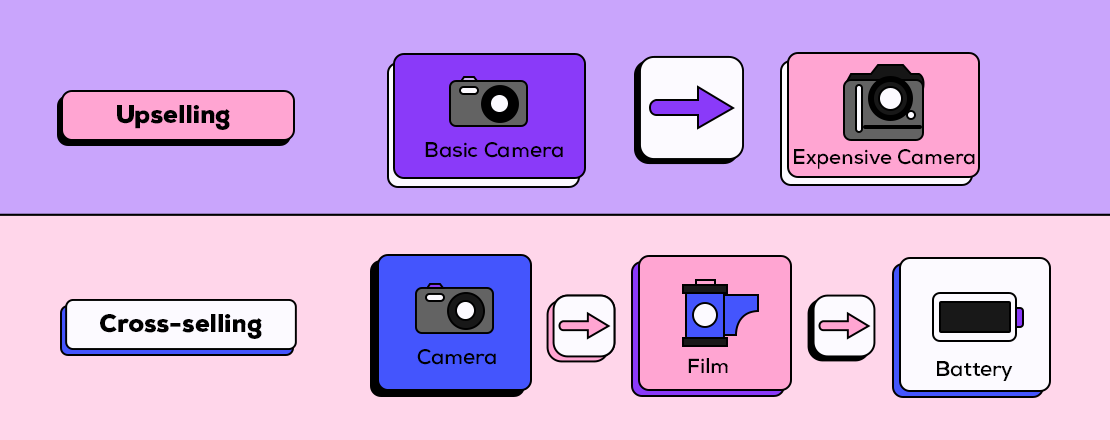Fintechs are the best positioned to win the POS financing competition, thanks to a sharp rise in adoption from 2015 to 2019.
Not long ago, the only financing options available to a consumer at the point of sale (POS) were credit cards or bank loans. While these options are easy-to-use, consumers paid the price for convenience, and the paperwork and time were the deterrents for banks. However, the new wave of point-of-sale financing or POS financing is transforming consumer finance. Technology and data indicate merchants and financial institutions can now offer loans at the moment of sale, both online and offline.
The existing scenario of the POS financing market
POS financing is a win-win for consumers seeking transparent credit options, and merchants capitalizing on a broader customer base and opportunity to boost sales. For consumers, it is instantaneous, seamless, and offers greater transparency on the total cost of the purchase. Also, this alternative form of financing liberates customers from mainstream credit options. For merchants, the vital selling proposition of POS financing is fewer abandoned online shopping carts leading to higher sales.
Filene Research Institute1 estimates the size of the global POS finance market at $6 trillion, and the U.S. market at $391 billion with healthcare, electronics, and home furnishings products as the most popular consumer categories. POS financing is growing 20 percent a year in the U.S. with similar growth rates found in Europe, Australia, and Asia2. As compared to all other financing products, this category is growing at a faster pace and twice as fast as credit cards. In the U.S., outstanding balances on POS installment loans are projected to reach $162 billion by 20213. Today, installment loans stand for only 3.5 percent of all U.S. consumer credit4. It means POS financing is a blue-sky opportunity for players out there be it, financial technology firms or fintechs, banks, merchants, credit card issuers, and even manufacturers.
Fintechs, the best positioned to leverage POS financing
Millennials are drawn to POS financing
Fintech is a buzzword in the financial circles, and they bring in a fresh take on problems faced by the consumers, and as seen through the lens of technology. With a massive millennial customer base and an impressive suite of digital offerings, they are the best positioned to leverage POS financing.
Millennials are drawn to POS financing due to their aversion to high-interest rates levied on credit cards. In contrast, POS financing loans have a transparent and fixed tenure of repayment with interest rates lower than those on credit cards. Fintechs have gained traction by working on consumers’ pain points like lack of understanding as to how the annual percentage rate works, which they address by offering transparent and fixed credit terms. Fintechs ensure a paperless and digital-first approach to consumer onboarding. They have built platform capabilities to leverage nontraditional data sets for credit scoring apart from the usage of traditional credit bureau data. Their digital-first approach ensures a frictionless purchase experience.
Fintech adoption continues to grow globally
All this has led to strong growth in fintech adoption. As per the EY Global Fintech Adoption Index5, global fintech adoption has reached 64 percent, and 68 percent of consumers consider a non-financial services company for financial services. Markets have seen a sharp rise in adoption from 2015 to 2019, which reflects the availability of fintech services offered by banks, insurers. The index also recorded attractive rates and fees as the top reason for consumers to use a fintech firm.
| Market | 2015 | 2017 | 2019 |
| Australia | 13% | 37% | 58% |
| U.K. | 14% | 42% | 71% |
| U.S. | 17% | 33% | 46% |
| Total Average | 14.6% | 37.3% | 58.3% |
The top POS financing players6 in Australia include Afterpay, with 4.6 million customers, and Zip with 1.3 million. OpenPay works in specific categories such as dental, healthcare, and automotive. Splitit, with its focus on online sales, entered the Australian market in 2019, and Latitude has announced that it will be launching a product to compete directly with these new entrants.
Europe has traditionally dominated in this space and is home to Klarna, which is leading the way with their checkout solutions benefitting both merchants and the end consumer. POS financing companies found fertile ground for disruption in Sweden, thanks to its high rate of adoption, accessible credit-scoring data, and efficient recoveries.
According to a report, 70 percent of North American consumers used a fintech app in 20197, which means consumers are embracing fintech in the U.S. With Affirm partnering over 6000 merchants and Sezzle with more than 17000 retail partners, the adoption rate has grown faster than anticipated. You can read in detail about the top disruptive models from the POS financing industry.
Banks need to take note
With the rise of POS financing, and fintechs ruling this space, they have been an integral part of driving down the cost of financial intermediation, eating away the profit margins of the lenders. A recent analysis by TransUnion and DBRS indicates that fintechs now have a larger share of personal loan balances than banks – fintechs are accountable for 40 percent, and banks for below 30 percent8. While this may be unsettling for banks and other traditional financing institutions, it also opens many avenues. Banks are being compelled to alter their primitive business practices to offer a broader spectrum of services. These are going to allow them to compete effectively with innovative fintech startups.
Though nascent, bank-fintech partnerships are on the rise
Banks still are the chief lenders around the globe, but what they do not have is the technology to bring their loan programs to the point of sale of the retailers. Bank-fintech partnerships allow a bank to be at the point-of-sale by utilizing fintechs as technology enablers between their funds and the systems of the retailers.
Banks are realizing that fintechs pose less as a threat and more as a potential end-to-end solution.
– In 2018, Mercantille Bank of Michigan joined forces with Orlando-based fintech startup Abe.ai to improve the financial health of the customers and drive higher engagement.
– In 2020, Deutsche Bank announced an investment in Germany fintech Traxpay, a company that will integrate supply chain financing technologies and solutions within the offerings of Deutsche Bank.
– The partnership between DBS Bank and business cloud technology company Infor will facilitate trade financing to corporates within the Nexus network.
– Banks, such as Regions Financial Corp, SunTrust, and Fifth Third Bancorp, have all benefited from fintech GreenSky, to become significant players in the POS financing space. GreenSky9 has funded more than $12 billion loans – helping banks reach over 1.7 million new customers.
It is time for banks to pick a side when it comes to fintech. Banks can either continue to see fintechs as a threat or take the smarter ground and create opportunities out of collaborations. With POS financing, this decision needs to come quickly. Only 52 percent of banks have stated that lending and credit are significant areas of focus to their fintech partnership strategies, according to a Cornerstone Advisors 2019 study.
To shift their loan programs into the arms of a retailer’s POS with a seamless user experience that shoppers today expect, they need to turn to fintechs. Banks that secure these partnerships will be ahead of the game in terms of POS consumer financing.
Trends to watch out for
POS to cater to smaller-ticket purchases
Initially, POS loans mostly targeted bigger-ticket purchases. Today, however, newer entrants, such as Afterpay, Klarna, and Sezzle, are targeting smaller purchases more directly. Consumers with low-ticket sizes ($200 to $300) are shifting to four- to six-week (shorter-tenure) POS financing options. These smaller-ticket loans are growing at rates exceeding 40 to 50 percent. Additionally, you can see a lot of premium merchants offering loans at 0 percent APRs from POS financing providers. Zero percent interest, combined with a frictionless experience, has started attracting prime customers – 55 percent of origination volume from the prime customers (customers with credit scores above 680), a 2019 data shows10.
Tech-enabled, in-house options to enable more control
It is challenging to offer credit without a third-party. Still, a growing number of retailers choose cloud-based lending technology for POS financing. This option offers several advantages, including:
– Client-data security. Client data is held between your business and its customers, and you can cater to clients who demand complete confidentiality. Additionally, you can avoid the risk of customers getting poached by competitors.
– Higher conversion rates during checkout. Customers go through a simple checkout without submitting additional credit application forms to a third-party lender leading to an increase in the checkouts.
– Savings on transaction fees (can be as high as 15 percent) payable to a third-party lender.
Integration of POS financing into the pre-purchase phase
The integration of POS financing into the pre-purchase phase will leave footprints across a broad spectrum of industries, health, education, automobile, etc. Around 75 percent11 of consumers who finance big-ticket purchases decide to do so early in the purchase journey before the actual purchase. Embedding their offerings early in a consumer’s purchase journey increases the likelihood of consumer adoption. Also, the integration of financing offers throughout the consumer journey increases the conversion rate by two to three times, as compared to integration at checkout.
1LendIt Fintech: Point-of-Sale Financing Poised as a Leading High-Growth Offering from Banks and Fintechs
2LendIt Fintech: Point-of-Sale Financing Poised as a Leading High-Growth Offering from Banks and Fintechs
3 McKinsey & Co.: US lending at point of sale: The next frontier of growth
4LendIt Fintech: Point-of-Sale Financing Poised as a Leading High-Growth Offering from Banks and Fintechs
5The Initiatives Group: Buy Now, Pay Later – New? Old? Better?
6EY Global Fintech Adoption Index
7FinTechs Continue to Drive Personal Loan Growth
8Daily Forex Report: GreenSky is Winning with Customers and Businesses
9McKinsey & Co.: US lending at point of sale: The next frontier of growth
10McKinsey Digital Commerce Benchmark















